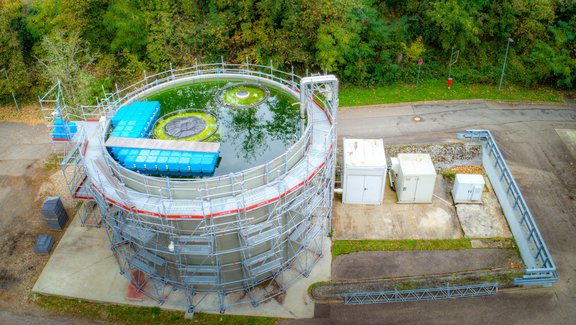The Southern Wide-field Gamma-ray Observatory (SWGO)
In recent years, the HAWC and LHAASO gamma ray observatories have provided significant insights into the highest-energy gamma ray sources in the TeV range. These observatories consist of many individual particle detector stations, which are distributed over an area of up to 1 km2 and measure the particle flux in the Earth's atmosphere from all directions, day and night. Extended air showers generated by cosmic rays and gamma rays stand out from the random noise background. Analysing such events in the detector ensemble then allows conclusions to be drawn about the type, energy and origin of the original particles.
Due to the large area covered, the wide field of view and the continuous operation, such an observatory is particularly suitable for observing
- large-scale emissions,
- weak emissions at the highest energies and
- short-term events such as gamma-ray bursts.
This makes it an excellent complement to telescope-based systems such as H.E.S.S. and CTA.
HAWC and LHAASO are located in the northern hemisphere; there is no comparable facility in the southern hemisphere, although the southern sky - where, amongs others, the centre of the Milky Way can be observed - is of particular scientific interest. The MPIK is therefore playing a major role in the development of the Southern Wide-field Gamma-ray Observatory (SWGO), a next-generation detector.
The highly international SWGO collaboration is currently working intensively on the development of hardware and software prototypes and has taken major steps towards consolidating and defining the detector over the past year. A core idea that has been established is to divide each detector station into two layers in order to efficiently separate the cosmic ray background. This idea was investigated at MPIK with the help of simulations and realised as a first prototype in our water simulation tank (see press release).
Recently, the exact location for the observatory in the Andes was determined: 4770 m above sea level in the Atacama Astronomical Park in Chile. In 2025, the first prototypes will be built at the final location and, among other things, equipped with electronics that have been developed entirely at MPIK.
Video about SWGO and the R&D work at MPIK (YouTube)
Press release on deployment and tests of the floating double-layer detector prototype
Press release on the construction of the water simulation tank at MPIK
Press release on founding the SWGO collaboration (in German)

